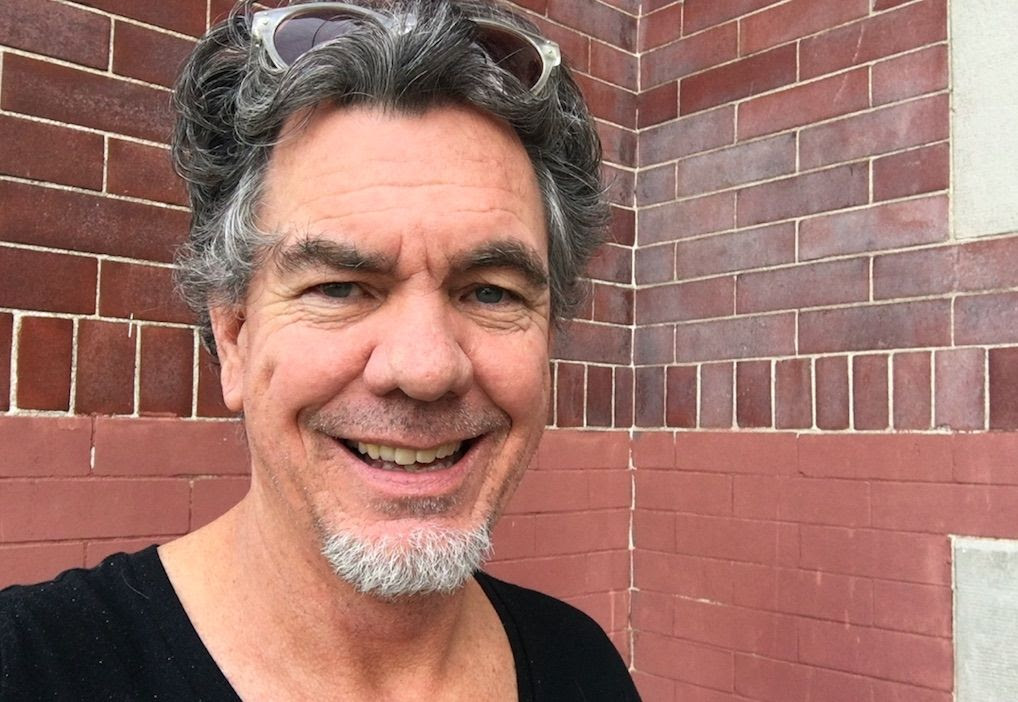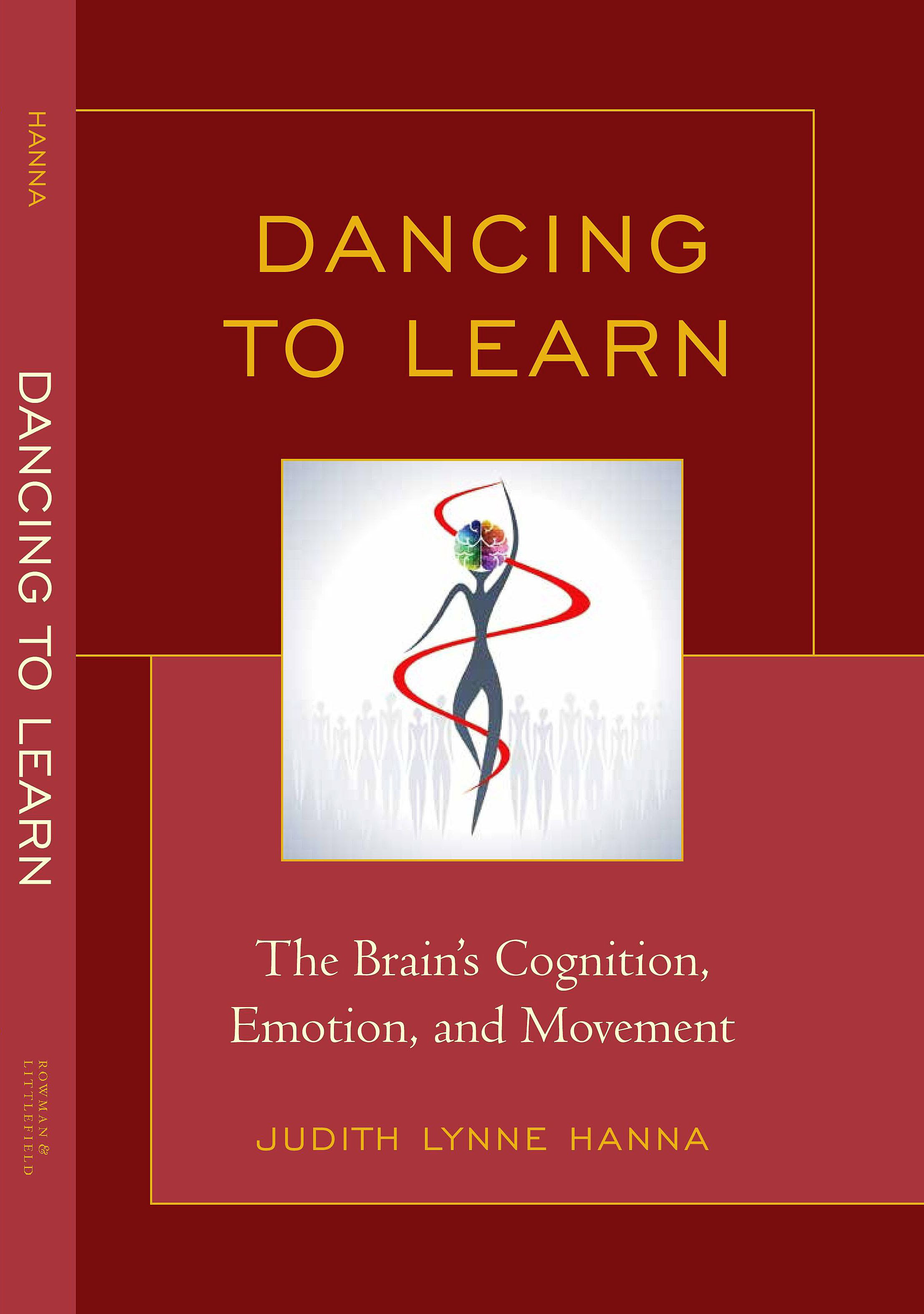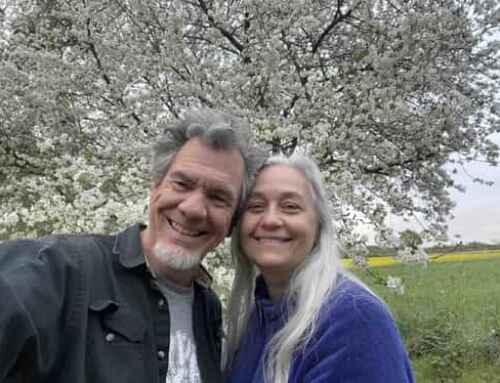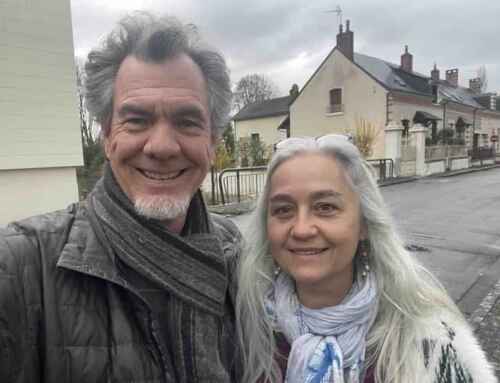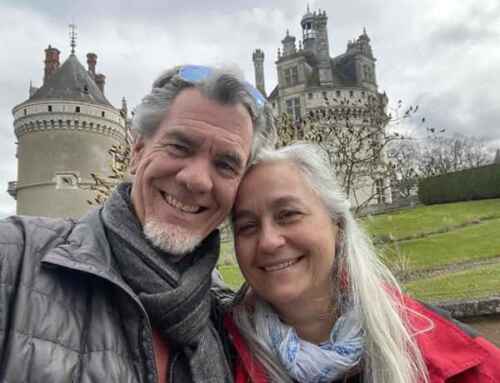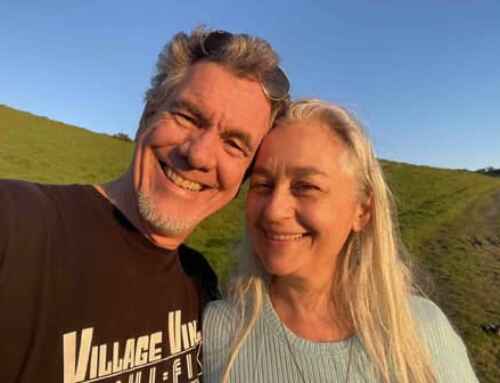Do you ever consider what drives the patterns you live in? Have you ever thought about what shapes your media and information landscape? Do you ever find yourself lost down a deep rabbit hole of information wondering just how in the heck you got there?
One of the main hidden facts of the modern world you live in is how many of your experiences are shaped and designed with a purpose in mind. Algorithms are the formulas that are intentionally constructed to create a specific result depending on the situation.
Online or off-line, you can train yourself to notice them everywhere. Take your average supermarket for instance. The carts are placed in such a way that you naturally want to circulate counter-clockwise around the edge of the store. So the grocers know that this is the best place to put the highest profit impulse-buy items.
If you’ve ever been inside an IKEA store, you’ve experienced one of the ultimate human hamster mazes of retail. They’ve made it so easy to simply follow the lines on the floor that you can practically turn your mind off and wonder how you arrived at the checkout with thousands of dollars worth of stuff in your cart that you didn’t even know you needed!
Simply put, algorithms function like a set of “if / then” sequences. If you like cute cat videos, then you probably like cute puppies or baby raccoons too! What’s important to keep in mind is the end goal of whoever is designing the experience in the first place.
The goal of your average grocery store or big box retailer is to sell you as much stuff as possible. You know you’re an outlier when you manage to navigate your way through Costco with precisely the one item you had in mind in your basket.
Online experiences are often designed around keeping you engaged with the content, so that the advertisers who are supporting the website get more time with your eyeballs. The rosy promise of the early Internet era has been replaced with skepticism as we see what happens when people are confined to their echo chambers and filter bubbles.
With a little discipline and intention, you can grab the algorithm by the tail and use it to drill down as a tool of discovery. For media such as music, movies, or books, algorithms are especially useful. YouTube,Amazon, Netflix, and other similar sites all have “suggestion engines“ that recommend things based on what other people with similar tastes have found.
Personally, I spend a fair amount of time searching for vinyl records on the Discogs site, and have found many surprises based on what other people have searched for.
But when it comes to critical thinking about current events or social issues, it’s wise to beware and use other methods to balance your views. A recent study of YouTube demonstrated that their algorithm steers you towards controversial fiction and conspiracy theories on almost any topic you start with, due to the fact that outrage and fear are two of the strongest emotions for keeping you glued to the screen.
For me, one thing that’s improved my state of mind this past year is turning off the Facebook timeline algorithm entirely. Even Facebook admits that their highly-engineered stream leads to depression, FOMO, (Fear Of Missing Out), and a diminished sense of well-being.
Since a fair amount of my business is tied in with Facebook, it’s not practical for me to abandon the platform altogether. So I use a browser plug-in called the Timeline Killer which allows me to post to my Pages or Groups, see my notifications and messages, and do whatever normal business I have there unimpeded.
But the center of the page is blank, and I am not tempted by the distractions of a cute puppy, an ugly politician, or a targeted ad. It feels good not to engage in personal controversies with people who seem familiar since their full name and photo is there, but I probably wouldn’t have a cup of tea with in real life.
But don’t get the wrong idea, I haven’t sworn off the joys of surfing the web completely. Once I figured out how Reddit works, I left Facebook and never looked back!
Every platform has its own aesthetic, Twitter is like a secret code of hashtags, Instagram is about telling stories with photos. I tend to think of Reddit as more of a content network than a social network, there’s conversations and posts on virtually any topic in the universe. Yet when I first tried it several years ago I was baffled, even they describe their (soon to be updated) desktop interface as a “dystopian Craigslist.”
On their mobile app however, the content is displayed as a stream much like other platforms. The difference is in the control you are given to tailor what you see. You can simply select ‘Popular’ and see a random mix of what has been “upvoted” the most, or you have the option of subscribing to your own selection of “subreddits“ and curating what you see in your “All“ feed. In other words, you can design your own algorithm to suit yourself.
Another difference is that you are safely anonymous behind whatever username you choose, and it’s perfectly OK to have multiple usernames for different moods. With my main handle I browse news and politics, science and technology, or my current guilty pleasureATBGE, (Awful Taste But Great Execution). AskReddit is a fascinating place to get an international perspective on the human experience.
With one tap I can toggle over to a different persona where I will only see posts about metalwork, welding, sculpture, art, and design. Meaning that I can choose an entirely different view of the world based on my state of mind in the moment.
Anyone can make a subreddit about anything, and set the rules for how it works. We have one specifically created for Conscious Dance Events from our Dance First members where every class or event on the MoveMap gets posted.
The key difference with Reddit is that the algorithm is humanity. Anything that is posted simply goes into its content category (subreddit) and is than either voted up or down. So whatever people find most interesting on a given topic rises to the top.
And while the commentary is prolific and lively, (threads of 10,000 or more are not uncommon) the feeling of personal vitriol is missing since users are anonymous and not bound by geography or “friend“ status.
The point with any media, (or relationship for that matter), is to keep in mind YOUR goals for the interaction, and ask yourself if the feeling it brings is in line with your highest good.
With so much of the mediated world we live in being guided by the unseen hand of algorithms, it’s important to remember and give credence to the most important algorithm of all, your own intuition and body intelligence.
When you remember to pause and drop into your body to check your feelings and sensations, you tap into your internal compass, an oracle like no other. Your world provides plenty of input, but the vibration you hold inside is up to you.
With another long-winded observation posted for posterity, I bid you farewell and a great week ahead! May your algorithm for life lead you to great heights!
With love and light till next week,
M+
Mark Metz
Director of the Dance First Association
Publisher of Conscious Dancer Magazine
DANCE FIRST MEDIA SPOTLIGHT – “Why Dance Education Matters” by Judith Lynne Hanna, Ph.D.
(Today’s highlight is a feature from research for Judith’s most recent book “Dancing to Learn: The Brain’s Cognition, Emotion and Movement” Please share and appreciate, enjoy!)
WHY DANCE EDUCATION MATTERS by Judith Lynne Hanna, Ph.D.
Many arguments for dance education have been made. For example, certainly students in dance may acquire skill sets that serve them in myriad of ways, develop embodied knowledge and kinesthetic connections among us, and become gainfully employed.
But the most important reason to offer dance education in schools and universities as well as the broader community is what neuroscientists have revealed in the past 15 years. With at least 35 new technologies, and support from government and the private sector, researchers have been able to view the intricacies of the brain, including the brains of dancers.
Dance, contrary to much public perception, is not merely art or recreation. Dance is now being studied as a pathway to enhance learning. Scientists are turning to dance because it is a multifaceted activity that can help them and ultimately educators to demystify how the brain coordinates the body to perform complex, precise movements that express emotion and convey meaning. Dancers possess an extraordinary skill set: coordination of limbs, posture, balance, gesture, facial expression, perception, and action in sequences that create meaning using time, space, and effort. Dancers deal with the relationship between experience and observation.
The brain hides from our sight the wondrously complex operations that underlie this feat of dance. Although there are many secrets to unravel about the power of the brain and dance, advances in technology, such as brain scanning techniques and the experiments of dancers, dance makers, and dance viewers, reveal to us the unexpected, including the brain’s interpretation of the senses. Research shows that dance activity registers in regions of the brain responsible for cognition (thinking).
More than 400 studies related to interdisciplinary neuroscience reveal the hidden value of dance. For instance, we acquire knowledge and develop cognitively because dance bulks up the brain. Consequently, the brain that “dances” is changed by it.
Dance comprises languages of physical exercise that spark new brain cells (neurogenesis) and their connections. These are responsible for acquiring knowledge and thinking. Dancing stimulates the release of the brain-derived protein neurotropic factor that promotes the growth, maintenance, and plasticity of neurons necessary for learning and memory. Plus, dancing makes some neurons nimble so that they readily wire into the neural network.
Neural plasticity is the brain’s remarkable ability to change throughout life. This assuages my fear — we thought seniors lost it and that was that. As an octogenarian, dancing since age 10, I’m still dancing, now flamenco, belly dance, jazz, salsa, and hip hop with my 12 year-old grandson Merrick Hanna, who performed four times on America’s Got Talent.
As a method of conveying ideas and emotions with or without recourse to sound, the languages of dance draw upon similar places and thought processes in the brain as verbal language. Dance feeds the brain in various kinds of communication. Through dance, students can learn about academics — and themselves — including sexual, gender, ethnic, regional, national, and career identities. Moreover, dance is a means to help us improve mood and cope with stress that can motivate or interfere with concentration and learning. Influenced by body senses, environment, and culture, the brain “choreographs” dance and more.
The brain is comprised of about 100 billion electrically active neurons (cells), each connected to tens of thousands of its neighbors at perhaps 100 trillion synapses (the spaces between neurons where information transfers can occur). These atoms of thought relay information through voltage spikes that convert into chemical signals to bridge the gap to other neurons.
All thought, movement, and sensation emanate from electrical impulses coursing through the brain’s interconnected neurons. When they fire together they connect and reconnect, and the connections between them grow stronger in impacting our perception, our comprehension, and different kinds of memory.
If a pattern is repeated, the associated group of neurons fire together resulting in a new memory, its consolidation, and ease of retrieving it. Neurons can improve intellect, memory, and certain kinds of learning if they join the existing neural networks instead of rattling aimlessly around in the brain for a while before dying.
Brain research has given us many insights for dance and other kinds of knowledge. Illustratively, we can apply what psycholinguists have found about learning a second or third verbal language to learning more than one nonverbal language, that is, another dance vocabulary (gesture and locomotion) and grammar (ways movements are put together), and meaning. Children who grow up multilingual have greater brain plasticity, and they multitask more easily. Learning a second or third language uses parts of the brain that knowing only one’s mother tongue doesn’t. Students who learn more than one dance language not only are giving their brains and bodies a workout; they are also increasing their resources for creative dance-making.
Significantly, a key reason for dance education is that dance is exercise plus. Nonverbal languages affect similar places and learning processes in the brain as verbal languages creating new neurons and their connections. Consequently, dance is an effective means of communication that also stimulates brain development. Dancing thus promotes learning in all subjects.
Society privileges mental capacity, mind over matter and emotion. Talking, writing, and numbers are the media of knowledge. However, we now know that dance is a linguistic, brain-driven art, and also, a fuel for learning, an avenue to thinking, translating, interpreting, communicating, feeling, and creating. As a multimedia brain enhancing communication, dance at any age enriches our cognitive, emotional, and physical development and extends to most facets of life.
See Dancing to Learn: The Brain’s Cognition, Emotion and Movement for an explanation and synthesis of the brain science research with dance, the arts and social and behavioral sciences.
Also see www.judithhanna.com
JUDITH LYNNE HANNA (PhD, Columbia University), an Affiliate Research Professor in the Department of Anthropology at the University of Maryland, has conducted dance research in villages and cities in Africa, and theaters, school playgrounds, classrooms, and adult entertainment clubs in the United States. A long-time dance student, she has taught dancing and about dance to non-dancers, performers, and academics. Her ten books include Dancing to Learn, To Dance Is Human, The Performer–Audience Connection, Partnering Dance and Education, Dancing for Health, and Disruptive School Behavior. Hanna’s more than 100 articles appear in, e.g., Dance Magazine, Dance Teacher, Journal of Communication, Journal of Alternative and Complementary Medicine, Educational Researcher, Interethnic Communication, Stagebill, The New York Times and Washington Post. Hanna has lectured at more than 50 colleges and universities addressed more than 30 conferences; and published her work in Belgium, Brazil, Canada, France, Germany, Jamaica, Netherlands, Poland, Santo Domingo, Sweden, and United Kingdom; and appeared on radio and television in Canada, Nigeria, Sweden, and the U.S.

